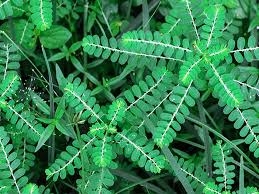Zion20
Others : Biochemist In Making (final Year Student)
Wants to meet Career Partners : Biochemistry Career
Articles
21
Followers
5
profile/424IMG_20200615_143703.jpg
Zion20

HABBITS THAT DAMAGE THE BRAIN
~3.9 mins read
ease note. We do not support any version of Internet Explorer.
Accept
Accept

SEARCH JOBS
12-Jul-2019
7 Brain Damaging Habits You Should Stop Doing Right Now
Have you ever noticed that the only organ in our body that thinks is often the one less thought about? Everyone around is worried about their health, the way they look, the food they eat, etc., but are you paying attention to the most vital organ who controls your body? Keeping your brain fit & healthy is just as important as keeping your heart or other organs healthy.
Brain is the most vital organ in our body and when it gets damaged, it can affect you severely, including your thoughts, memory, sensation, etc. Scientists suggest that a few changes in your lifestyle can enhance your knowledge, imagination power, and mental resilience.
Here are 10 brain-damaging activities that you must stop doing for better functioning of your brain:
1. Too much of sugar consumption
Excessive intake of sugar for a long period disturbs our body’s capacity to absorb proteins and nutrients. This might result in a condition called malnutrition, which deters brain’s growth. So, why this happens? It happens because our body lacks adequate nutrients in the blood, and hence, it does not deliver enough nutrients to our brain, which in turn, deters its development.
Belly-busting sweets can harm your memory and thinking ability, so choosing antioxidant-rich sweets such as raspberries and dark chocolate will be a wise choice for both your brain as well as waistline.
2. Not getting enough sleep
Sleep deprivation can lead to several issues such as extreme daytime drowsiness, depression, and impaired memory. The part of the brain that suffers due to lack of sleep is the ‘hippocampus’. Even a single night of improper sleep can affect your brain’s ability to memorize new information.
Several researches have also revealed that the brain purifies itself of toxins only during the deep sleep cycle. Lack of sleep can cause the death of brain cells, which can lead to impaired memory and reduced abilities.
3. Playing loud music with earphones or headphones
Listening to music at a very high volume with your earphones or headphones might damage your hearing abilities permanently. It can result in some brain problems such as loss of memory and damage to your brain tissue in the coming future. This is because brain is the one, which takes efforts to comprehend what is being said around you. If you apply excess pressure on your brain, it’s sure to get damaged.
4. Missing breakfast and inadequate water intake
Maybe for a diet or to save time, many people opt to skip their breakfast. A very few people might be aware of this fact that not having breakfast can damage your brain. Every morning after a good sleep your body needs nutrients. Skipping breakfast deprives the brain of these essential nutrients. Several researches state that children who have breakfast regularly perform much better at school. Skipping breakfast results in low blood glucose levels, which adversely affects brain’s functioning.
Almost, 80% of the brain is water. Brain needs enough water to think faster and focus better. So, it’s very important that you stay hydrated all the time. Drinking plenty of water will benefit both your body and brain to function better.
5. Smoking
We are all aware that smoking causes cancer, but do you know that the addictive nicotine in the cigarettes also shrinks your brain? In fact, brain shrinkage for a prolonged period can lead to Alzheimer’s disease.
6. Too much food
Overeating makes us gain weight, feel bloated, and increase the chances of life-threatening diseases. But you might be unaware that it also damages your brain beyond your imagination. It hardens the brain arteries, hence, damaging our mental abilities.
Several studies have revealed that high caloric intake for a prolonged period can, in fact, increase a person’s chances of developing memory loss, or mild cognitive impairment (MCI), in the future.
7. Sleeping by covering your head
You may feel it warm & comforting, but sleeping with a blanket covered over your head might increase the consumption of carbon dioxide and reduce the consumption of oxygen. Oxygen is very essential for proper functioning of your brain, and not having enough of it can harm your brain cells.
By now, you must be wondering these are very common things that you often do daily. So, now it’s time to nurture your brains and give the attention it deserves. To be the most productive of ourselves, that’s exactly what we need to stop doing. Your brain will definitely thank you.
profile/424IMG_20200615_143703.jpg
Zion20

HEALTH BENEFITS OF STONEBREAKER
~12.5 mins read
Health benefits of stonebreaker(ALSO KNOWN AS PHYLLANTHUS)
Phyllanthus emblica and Phyllanthus niruri have long been touted as a safe and effective remedy for liver disorders and a host of other medical conditions.
Phyllanthus is grown throughout the world in tropical and subtropical climates. Available as a dietary supplement, the leaves stems, and root of the phyllanthus plant can be used to make teas, decoctions, tinctures, and extracts. Phyllanthus poultices, using fresh shoots and leaves, can also be applied to the skin to treat sores and rash.
Also Known As
.Gale of the wind
.Leafflower
.Seed-under-leaf
.Stonebreaker
Health Benefits
Phyllanthus has been used in the Ayurvedic system of medicine for over 2,000 years, where it is believed to prevent or treat a wide range of unrelated health conditions. The Ayurvedic drug Bhumyamalaki is widely used to treat liver disorders, the effects of which are attributable to Phyllanthus niruri.1
Other conditions commonly treated by phyllanthus include:
.Bladder infections
.Diabetes
.Gonorrhea
.Heavy menstrual bleeding
.Hepatitis B
.Infectious diarrhea
Chronic kidney disease
.Skin infections
.Urinary tract infections
The evidence supporting these health claims is generally weak. With that being said, there is evidence that phyllanthus can aid in the treatment of certain liver or kidney diseases. Here is what some of the current research says:
Liver Disease
Scientists have found that certain species of Phyllanthus may help prevent liver inflammation and damage. According to a 2012 study in Pharmaceutical Biology, extracts of Phyllanthus polyphyllus, Phyllanthus emblica, and Phyllanthus indofischeri were able to protect liver cells (called hepatocytes) from oxidative stress when exposed to hydrogen peroxide in a series of test-tube studies.
The results were supported by a 2017 study published in the journal Nutrients in which a 50% extract of Phyllanthus niruri appeared to halt the progression of non-alcoholic fatty liver disease (NAFLD) in mice. Not only was the extract able to normalize liver enzymes, but there was no sign of fibrosis (scarring) in liver tissue samples. These effects were attributed to a plant-based polyphenol called phyllanthin, unique to Phyllanthus genus.
Further research is needed to determine whether the same effects can be achieved in humans.
Hepatitis B
Hepatitis B is a form of viral hepatitis that can cause long-term liver inflammation and damage. Since as far back at the 1990s, studies have suggested that phyllanthus can eradicate the hepatitis B virus (HBV), effectively "curing" users of the chronic infection.2
Many of these studies were criticized for including acutely infected individuals in the research. In people with acute hepatitis B (meaning that they were recently infected), as many as 90% will experience spontaneous clearance of the virus without treatment.3 Only a small number will progress to a chronic HBV infection, some of whom may never experience symptoms.
Claims that phyllanthus can "cure" or "treat" hepatitis B are unlikely given that chronic HBV infections are not only incurable but variable in their progression.
This was echoed in a 2011 review in the Cochrane Database of Systematic Reviews in which investigators asserted there was "no convincing evidence that phyllanthus, compared with placebo, benefits patients with chronic HBV infection."
Kidney Stones
Phyllanthus has long been used in alternative medicine to prevent and treat kidney stones (also known as renal calculi). There is some evidence to support this claim.
According to a 2018 study in the International Brazilian Journal of Urology, 56 adults with kidney stones given a series of intravenous Phyllanthus niruri infusions experienced a 37.5% reduction in the size of their stones after 12 weeks.
Moreover, the infusion decreased uric acid and urinary oxalate levels that contribute to the development of stones (suggesting that phyllanthus may also help prevent kidney stones). There is little evidence that phyllanthus taken by mouth can render anywhere near the same effect.
HOLISTIC HEALTH SUPPLEMENTS
The Health Benefits of Phyllanthus
This ayurvedic herb may protect the liver and treat kidney stones
By Cathy Wong Medically reviewed by Arno Kroner, DAOM, LAc Updated on August 14, 2020
Phyllanthus amarus
ossyugioh/Getty Images
Phyllanthus is a genus of flowering plant used in herbal medicine. Commonly used in Ayurvedic healing, species like Phyllanthus emblica and Phyllanthus niruri have long been touted as a safe and effective remedy for liver disorders and a host of other medical conditions.
Health Benefits
Phyllanthus has been used in the Ayurvedic system of medicine for over 2,000 years, where it is believed to prevent or treat a wide range of unrelated health conditions. The Ayurvedic drug Bhumyamalaki is widely used to treat liver disorders, the effects of which are attributable to Phyllanthus niruri.1
Other conditions commonly treated by phyllanthus include:
Bladder infections
Diabetes
Gonorrhea
Heavy menstrual bleeding
Hepatitis B
Infectious diarrhea
Chronic kidney disease
Skin infections
Urinary tract infections
The evidence supporting these health claims is generally weak. With that being said, there is evidence that phyllanthus can aid in the treatment of certain liver or kidney diseases. Here is what some of the current research says:
Liver Disease
Scientists have found that certain species of Phyllanthus may help prevent liver inflammation and damage. According to a 2012 study in Pharmaceutical Biology, extracts of Phyllanthus polyphyllus, Phyllanthus emblica, and Phyllanthus indofischeri were able to protect liver cells (called hepatocytes) from oxidative stress when exposed to hydrogen peroxide in a series of test-tube studies.
The results were supported by a 2017 study published in the journal Nutrients in which a 50% extract of Phyllanthus niruri appeared to halt the progression of non-alcoholic fatty liver disease (NAFLD) in mice. Not only was the extract able to normalize liver enzymes, but there was no sign of fibrosis (scarring) in liver tissue samples. These effects were attributed to a plant-based polyphenol called phyllanthin, unique to Phyllanthus genus.
Further research is needed to determine whether the same effects can be achieved in humans.
Hepatitis B
Hepatitis B is a form of viral hepatitis that can cause long-term liver inflammation and damage. Since as far back at the 1990s, studies have suggested that phyllanthus can eradicate the hepatitis B virus (HBV), effectively "curing" users of the chronic infection.2
Many of these studies were criticized for including acutely infected individuals in the research. In people with acute hepatitis B (meaning that they were recently infected), as many as 90% will experience spontaneous clearance of the virus without treatment.3 Only a small number will progress to a chronic HBV infection, some of whom may never experience symptoms.
Claims that phyllanthus can "cure" or "treat" hepatitis B are unlikely given that chronic HBV infections are not only incurable but variable in their progression.
This was echoed in a 2011 review in the Cochrane Database of Systematic Reviews in which investigators asserted there was "no convincing evidence that phyllanthus, compared with placebo, benefits patients with chronic HBV infection."
Kidney Stones
Phyllanthus has long been used in alternative medicine to prevent and treat kidney stones (also known as renal calculi). There is some evidence to support this claim.
According to a 2018 study in the International Brazilian Journal of Urology, 56 adults with kidney stones given a series of intravenous Phyllanthus niruri infusions experienced a 37.5% reduction in the size of their stones after 12 weeks.
Moreover, the infusion decreased uric acid and urinary oxalate levels that contribute to the development of stones (suggesting that phyllanthus may also help prevent kidney stones). There is little evidence that phyllanthus taken by mouth can render anywhere near the same effect.
Cancer
Some scientists believe that phyllanthus has anti-tumor properties that may one day lead to the development of a new class of cancer drugs.
A 2010 study published in Phytotherapy Research aimed to evaluate the effect of Phyllanthus emblica (also known as the Indian gooseberry) on human cancer cell lines. In a series of animal and test-tube experiments, the scientists reported that an extract of Phyllanthus emblica was able to slow tumor growth by inducing apoptosis (programmed cell death) in a wide range of cancer cells.
Unlike normal cells that undergo apoptosis (so that old cells can be replaced with new cells), cancer cells are effectively "immortal" and do not experience apoptosis. As positive as the findings seem, a great many plant-based substances can trigger apoptosis in the test tube. That phyllanthus was able to reduce tumor size by 50% in mice suggests that it may have real-world applications. Further research is needed.
Possible Side Effects
Even though phyllanthus has been used for centuries in Ayurvedic medicine, little is known about its long-term safety. Side effects tend to be mild and may include stomach upset and diarrhea.
Due to the lack of research, phyllanthus should be avoided in children, pregnant women, and nursing mothers. It should also be avoided in people with Wilson's disease as it may further reduce uric acid levels and increase the risk of liver damage.
Interactions
Research has shown that phyllanthin can bind to platelet receptors and inhibit blood clotting.4 As such, phyllanthus should not be used with anticoagulants like Plavix (clopidogrel) as this can lead to increased bleeding and easy bruising.
Phyllanthus supplements should be stopped at least two weeks before scheduled surgery to prevent excessive bleeding.
Phyllanthus can also interact with drugs used to treat diabetes, potentially enhancing their effects and causing an adverse drop in blood sugar (hypoglycemia). It may also do the same with anti-hypertensive medications, lead to an adverse drop in blood pressure (hypotension).
Health Benefits
Phyllanthus has been used in the Ayurvedic system of medicine for over 2,000 years, where it is believed to prevent or treat a wide range of unrelated health conditions. The Ayurvedic drug Bhumyamalaki is widely used to treat liver disorders, the effects of which are attributable to Phyllanthus niruri.1
Other conditions commonly treated by phyllanthus include:
.Bladder infections
.Diabetes
.Gonorrhea
.Heavy menstrual bleeding
.Hepatitis B
.Infectious diarrhea
.Chronic kidney disease
Skin infections
.Urinary tract infections
The evidence supporting these health claims is generally weak. With that being said, there is evidence that phyllanthus can aid in the treatment of certain liver or kidney diseases. Here is what some of the current research says:
Liver Disease
Scientists have found that certain species of Phyllanthus may help prevent liver inflammation and damage. According to a 2012 study in Pharmaceutical Biology, extracts of Phyllanthus polyphyllus, Phyllanthus emblica, and Phyllanthus indofischeri were able to protect liver cells (called hepatocytes) from oxidative stress when exposed to hydrogen peroxide in a series of test-tube studies.
The results were supported by a 2017 study published in the journal Nutrients in which a 50% extract of Phyllanthus niruri appeared to halt the progression of non-alcoholic fatty liver disease (NAFLD) in mice. Not only was the extract able to normalize liver enzymes, but there was no sign of fibrosis (scarring) in liver tissue samples. These effects were attributed to a plant-based polyphenol called phyllanthin, unique to Phyllanthus genus.
Further research is needed to determine whether the same effects can be achieved in humans.
Hepatitis B
Hepatitis B is a form of viral hepatitis that can cause long-term liver inflammation and damage. Since as far back at the 1990s, studies have suggested that phyllanthus can eradicate the hepatitis B virus (HBV), effectively "curing" users of the chronic infection.2Many of these studies were criticized for including acutely infected individuals in the research. In people with acute hepatitis B (meaning that they were recently infected), as many as 90% will experience spontaneous clearance of the virus without treatment.3 Only a small number will progress to a chronic HBV infection, some of whom may never experience symptoms.
Claims that phyllanthus can "cure" or "treat" hepatitis B are unlikely given that chronic HBV infections are not only incurable but variable in their progression.
This was echoed in a 2011 review in the Cochrane Database of Systematic Reviews in which investigators asserted there was "no convincing evidence that phyllanthus, compared with placebo, benefits patients with chronic HBV infection."
Kidney Stones
Phyllanthus has long been used in alternative medicine to prevent and treat kidney stones (also known as renal calculi). There is some evidence to support this claim.
According to a 2018 study in the International Brazilian Journal of Urology, 56 adults with kidney stones given a series of intravenous Phyllanthus niruri infusions experienced a 37.5% reduction in the size of their stones after 12 weeks.
Moreover, the infusion decreased uric acid and urinary oxalate levels that contribute to the development of stones (suggesting that phyllanthus may also help prevent kidney stones). There is little evidence that phyllanthus taken by mouth can render anywhere near the same effect.
Cancer
Some scientists believe that phyllanthus has anti-tumor properties that may one day lead to the development of a new class of cancer drugs.
A 2010 study published in Phytotherapy Research aimed to evaluate the effect of Phyllanthus emblica (also known as the Indian gooseberry) on human cancer cell lines. In a series of animal and test-tube experiments, the scientists reported that an extract of Phyllanthus emblica was able to slow tumor growth by inducing apoptosis (programmed cell death) in a wide range of cancer cells.
Unlike normal cells that undergo apoptosis (so that old cells can be replaced with new cells), cancer cells are effectively "immortal" and do not experience apoptosis. As positive as the findings seem, a great many plant-based substances can trigger apoptosis in the test tube. That phyllanthus was able to reduce tumor size by 50% in mice suggests that it may have real-world applications. Further research is needed.
Possible Side Effects
Even though phyllanthus has been used for centuries in Ayurvedic medicine, little is known about its long-term safety. Side effects tend to be mild and may include stomach upset and diarrhea. Due to the lack of research, phyllanthus should be avoided in children, pregnant women, and nursing mothers. It should also be avoided in people with Wilson's disease as it may further reduce uric acid levels and increase the risk of liver damage.
Interactions
Research has shown that phyllanthin can bind to platelet receptors and inhibit blood clotting.4 As such, phyllanthus should not be used with anticoagulants like Plavix (clopidogrel) as this can lead to increased bleeding and easy bruising.Phyllanthus supplements should be stopped at least two weeks before scheduled surgery to prevent excessive bleeding.
Phyllanthus can also interact with drugs used to treat diabetes, potentially enhancing their effects and causing an adverse drop in blood sugar (hypoglycemia). It may also do the same with anti-hypertensive medications, lead to an adverse drop in blood pressure (hypotension).
Selection, Preparation, and Storage
Phyllanthus is most commonly sold in the United States as a dried herb or dietary supplement. Fresh phyllanthus is generally considered a weed and can be foraged from nature, although a horticulturist may be needed to identify the species. Certain species, such as Phyllanthus amarus, have been known to cause mild toxicity.5Harvesting wild phyllanthus also poses a concern, as there is no way to know if it has been tainted with weed killers or has absorbed heavy metal and other contaminants from groundwater.6
Phyllanthus supplements may be safer but still pose risks. Because dietary supplements are largely unregulated in the United States, some brands may be safer than others. To better ensure quality and safety, opt for brands that have been independently tested by a certifying body like the U.S. Pharmacopeia (USP), NSF International, or ConsumerLab.
Sadly, few Ayurvedic products are ever submitted for quality certification. This can pose serious risks to the consumer.
According to a 2015 survey from the Mayo Clinic Health System, 40% of Americans who used Ayurvedic preparations had elevated levels of lead in their blood, while almost half had high levels of mercury.
Here are a few tips that can help you buy and use phyllanthus supplements more safely:
Always buy organic. This offers you the best assurance that the product is safe from contaminants. Only choose supplements that have been certified organic by the U.S. Department of Agriculture (USDA).
Read the product label. Phyllanthus supplements should ideally include the species name (such as Phyllanthus niruri) on the product label. Also, check for added ingredients you may be sensitive to, including gluten and animal-based gelatins. If you don't know what an ingredient is, ask your pharmacist.
Avoid wildcrafted goods. These are products foraged from the wild that are typically dried to make home decoctions and teas. If you don't know where a plant came from, you can never be sure if it is safe and untainted.
Avoid overdosing. More isn't always better. As a rule, never exceed the dosage on the product label. This doesn't necessarily guarantee that the product is safe or effective, but it may reduce the risk of gastrointestinal side effects.
Finally, let your doctor know if you are taking or planning to take phyllanthus so that you can be monitored for unexpected side effects or interactions.
If you experience side effects while taking phyllanthus, call your doctor or go to your nearest walk-in clinic. Be sure to bring the product along in its original container.
The above image is a typical exple of stonebreaker (Phyllanthus)
Advertisement

Link socials
Matches
Loading...
